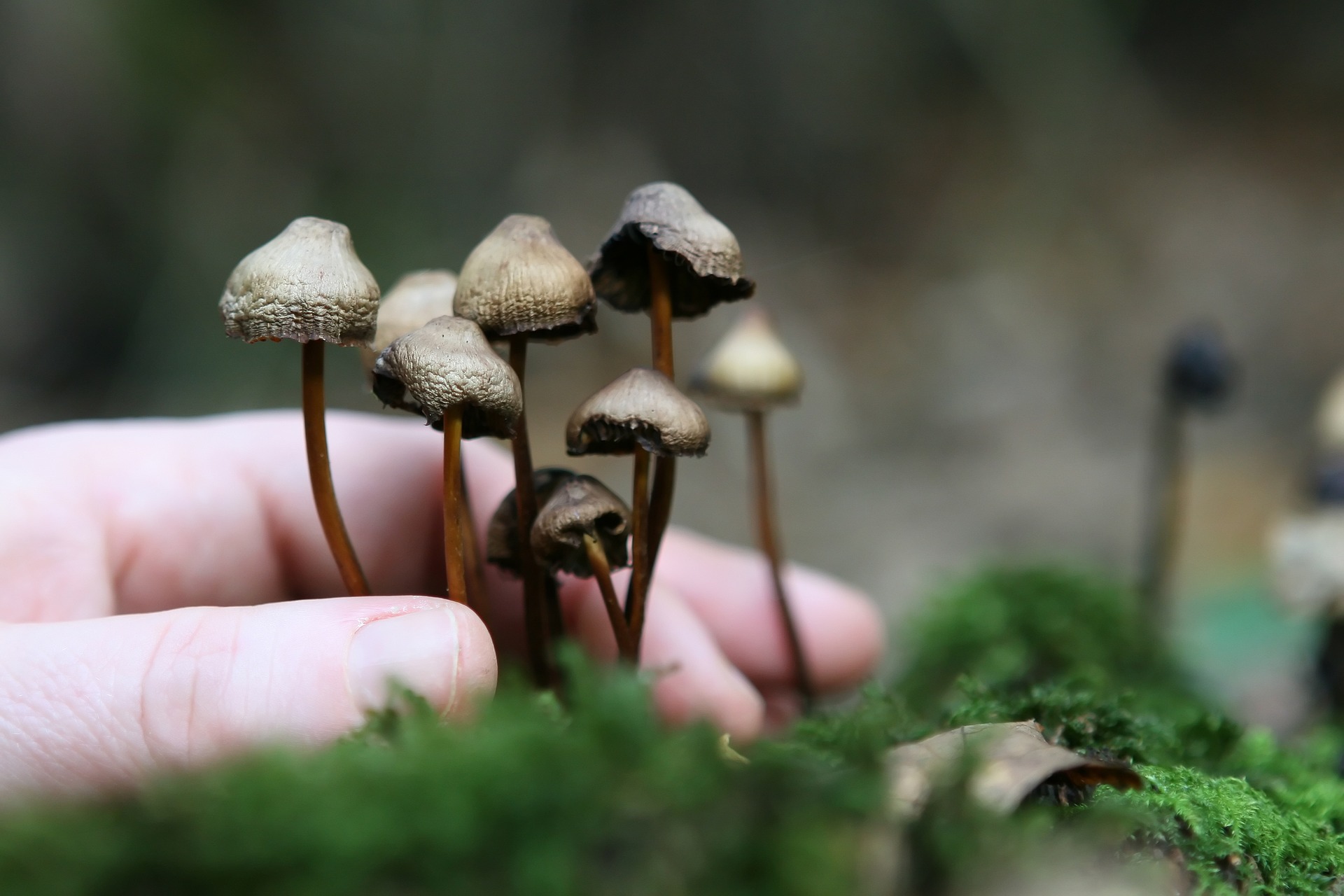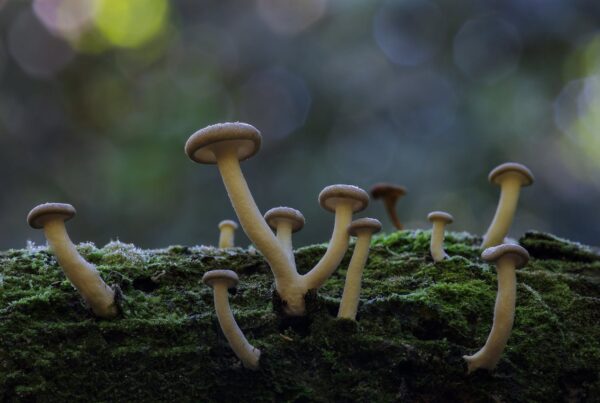Table of Contents
Growing Shrooms in General
It is all pretty easy actually; the conditions just have to be right. Most of it just involves substrate, spores and patience. Books about growing mushrooms certainly seem extensive and overwhelming. Fortunately, there are basics that you can learn that make the process easy for beginners. Growing your own is definitely less risky than hunting for them. In the wild, there are some toxic look-alikes which require real expertise to discern.
There are growing kits but growing from scratch can really provide a fulfilling experience. A great place to start is to have some understanding of what mushrooms in the wild require.
The Basics of Growing Your Own
First, let’s cover the basic process. This will give you a good understanding of the components required. You will soon discover that a common thread involves disinfecting.
Step 1: Preparing the jars– Punch holes in the lid circumference with a disinfected hammer and nail.
Step 2: Prepare the substrate– In a mixing bowl, mix 2/3 cup vermiculite, and ¼ cup water per jar. Remove excess water in a disinfected strainer. Then add ¼ cup of brown rice flour per jar and combine.
Step 3: Fill the jars– Fill sterilized jars with the substrate, 1/2” below the rims. Sterilize the exposed glass and fill the rest of the way with dry vermiculite.
Step 4: Steam to sterilize– Make sure jar lids are on tight and cover with foil. No moisture should enter the lid holes. Put a towel in the base of a pan and set the jars on top. Add water until halfway up the jars and bring to a boil. Steam for 75 to 90 minutes, add more water to the pan if necessary. Allow to cool to room temperature overnight.
Step 5: Prepare the spore syringe– Heat the syringe needle until red hot. Let cool and wipe with alcohol. Pull back the plunger and shake well. Wear latex gloves and a mask.
Step 6: Inject spores– Remove the foil and inject the spores (around ¼ cc of spore solution) through the holes into the top of the lid, with a needle against the side of the jar. Clean the needle with alcohol between each hole injection. Cover the holes with micropore tape. Repeat the process for all jars.
Step 7: Wait– Place the jars in a clean area that won’t be disturbed. Keep out of the direct sun and at 70 to 80 degrees Fahrenheit. After 7 to 14 days, white mycelium should appear. After 3 to 4 weeks at least half the jars should have “cakes.” Strengthen the mycelium for 7 more days.
Step 8: Prepare the fruiting chamber– Drill ¼ inch holes every 2 inches on the plastic storage container. Include both the base and the lid. Place it so that it has space underneath. Cover with a towel to retain moisture.
Step 9: Add perlite– Soak the perlite with cold water in a strainer. Drain thoroughly and spread over the base of the chamber. Make sure you have 4 to 5 inches of perlite covering the base.
Step 10: Rehydrate the cakes– Carefully remove the cakes from the jars. Rinse off the vermiculite under cold tap water. Place cakes in lukewarm water in in a cooking pot. Keep them submerged.
Step 11: Roll the cakes– Roll the cakes to coat in fresh vermiculite on a disinfected surface.
Step 12: Transfer– Place the cakes in the fruiting chamber. Set on foil squares so as not to touch the perlite. Space evenly and mist with a spray bottle. Fan them with the lid before closing.
Step 13: Wait for fruit– Mist the chamber 4 times per day, but don’t soak the cakes in water. Fan with the lid 6 times per day to improve air circulation. You can use lights set on 12-hour cycles or use ambient light. Then wait for the mushrooms to appear.
Propagation Supplies
You’ll need:
- 12 shoulderless ½ pint jars
- Hammer and small nail
- Mixing bowl
- Strainer
- Heavy-duty tin foil
- Large pot with a tight-fitting lid
- Small towel
- Microspore tape
- 50 to 115L clear plastic storage box
- Drill and ¼ inch bit
- Perlite
- Spray bottle
- Rubbing alcohol
- Torch lighter
- Disinfectant
- Air sanitizer
- Latex gloves, surgical mask, still-air box
Zoomies is Always Here to Offer Guidance
You should understand that there is a variance between different climates and regions. So, results will vary. We find that there are two very important factors, sterilization and vigilance.





